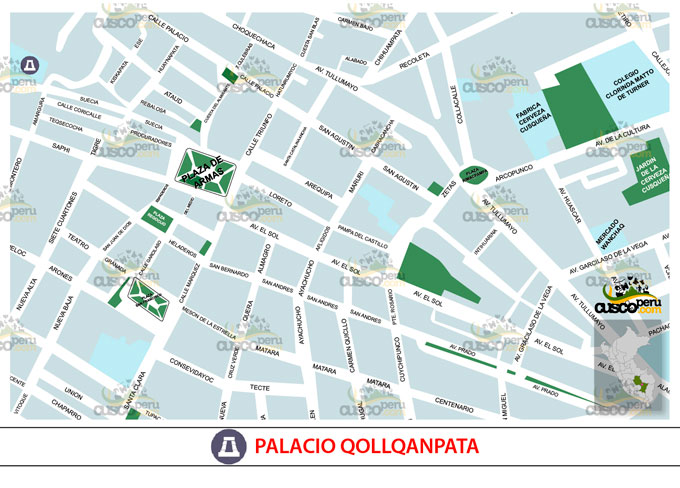Table of Contents
Qollqanpata was an important neighborhood at the time of the Incas, within it there were many houses but two in particular stand out: the palace of the same name and the shrine or huaca of "Sapantiana". This palace belonged to and was ordered to be built by Manco Capac, the first Inca. It was the best located within the city of Cusco. Upon the arrival of the Spaniards this place corresponded to Diego de Almagro and is currently in the hands of the Church of San Cristobal.
Its Quechua name means "site of the deposit", a name that alludes to the fact that during the Inca period there were large deposits here, possibly of foodstuffs.
Located on the slopes of Sacsayhuaman hill, in the current neighborhood of Qollqanpata…

What can be seen today are the ruins of its walls and part of a carved rock that survived the extirpators of idolatry. The facade of the low part, gives towards a rectangular square at the moment reduced, known like small square San Cristóbal.
The building, whose structure was located inside the complex, currently only preserves a beautiful Inca wall.
The sculpture behind the remaining wall of the aforementioned building is a lithic representation of a character expressing that he is carrying something on his back.
Consult your travel agency

Happy passengers